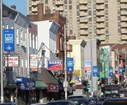Place is rarely provided the significance it deserves in the contemplation or commemoration of historic events/people/ideas in the narratives of Asian Americans and Pacific Islanders within the histories of the United States. This volume foregrounds "place" as a crucial variable in locating Asian Americans and Pacific Islanders in the history of the American empire.
-
Article 1: Asian Americans and Pacific Islander Americans Revisited: An Introduction to the National Historic Landmarks Theme Study
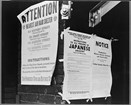
Introduction to "Finding a Path Forward: Asian American Pacific Islander National Historic Landmarks Theme Study" by Franklin Odo. Read more
-
Article 2: Essay 1: Imperialism and Migration

The United States was conceived in imperialism. The origins of US imperial history date back to the expansion of Europeans in their search for Asia and their wars against Asians, beginning with the ancient Greeks and continuing through Portugal and Spain's 15th century voyages of "exploration." That spread engulfed the planet in a world-system within which flowed capital, labor, and culture. Read more
-
Article 3: Essay 2: A Sea of Islands: Early Foundations and Mobilities of Pacific Islanders
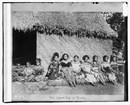
Introducing the Pacific Islands and its inhabitants might begin by acknowledging late 20th century constructions that coupled together Asian Americans and Pacific Islanders. These range from political alliances, demographic initiatives, and socio-cultural formations that grow out of intersections of Asians and Pacific Islanders in island communities as well as within the continental United States. Read more
-
Article 4: Essay 3: Archaeological Research on Asian Americans

Broadly speaking, historical archaeology is the archaeology of times and places for which written records are available but is more narrowly defined in North America (and elsewhere) as the archaeology of the modern world in the post-Columbian era of the past five centuries. In the United States, historical archaeologists have studied a diverse range of sites spanning the 16th through 21st centuries in both urban and rural contexts. Read more
-
Article 5: Essay 4: Immigration, Exclusion, and Resistance, 1800s-1940s

Asian immigrants and their descendants have a long and rich history in the United States. They have made and remade the places where they have settled, and some of the sites where Asian immigrants first entered the country, like the Angel Island Immigration Station in San Francisco, California, are now National Historic Landmarks. Read more
-
Article 6: Essay 5: Establishing Communities, 1848-1941
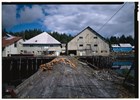
The 19th and 20th century imperial wars, conquest, and the expansion of market capitalism in Asia displaced millions of people and created opportunities for large scale migration from China, Japan, India, Korea, and the Philippines. In the first half of the 19th century, a number of factors profoundly impacted the livelihood, land arrangements, trade, and everyday lives of inhabitants who survived a number of catastrophic events. Read more
-
Article 7: Essay 6: Reframe, Recognize, and Retell: Asians Americans and National Historic Sites
If, as members of US culture, we all have relationships to national historic sites, how does the history of Asian American labor help us better understand this relationship? Read more
-
Article 8: Essay 7: Asian American Businesses, 1848 to 2015 Accommodation and Eclectic Innovation

At first glance, the challenge of generating a comprehensive overview of Asian American businesses, from the 1840s to the present, seems daunting. First, because such businesses were typically small-scale before World War II, and the documentary record in terms of detailed accounts about such enterprises in the published literature ranges from non-existent to slim. Read more
-
Article 9: Essay 8: The Architectural Legacy of Japanese America
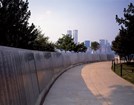
Efforts to capture the contributions made by people of Japanese ancestry to the built environment and cultural landscape of America are complicated by the limits of existing scholarship on the subject. A few topics have received considerable attention, particularly the influence of Western architects in Meiji-era Japan; the European and American craze for all things Japanese in the late 19th and early 20th centuries, and the phenomenon known as Japonisme or Japanism. Read more
-
Article 10: Essay 9: Sites of Resistance to Imperialism

In reflecting upon the theme of national historic sites and landmarks of "resistance to imperialism" in relation to Pacific Islanders and Asian Americans, it is important to acknowledge the layers of complexity and contradiction that exist because of the role that the American settler state plays as the imperial power and the object of this resistance. Read more
-
Article 11: Essay 10: Asian Americans and World War II
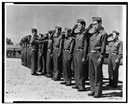
When assessing the history of Asian American communities, it is difficult to escape the conclusion that World War II was a major turning point. The last "good war" had as one of its enemies a hated Asian nation, Japan, and one result was the mass removal and incarceration of immigrants from Japan and their American-born and US citizen descendants. Read more
-
Article 12: Asian Americans During The Cold War

The allied victory in World War II set into motion a series of political and cultural realignments that produced new challenges and opportunities for Asian Americans. The wartime service of both Asian Americans and Asian nationals who were part of the allied military coalition impelled US policymakers to modify some of the more notorious exclusionary laws that targeted Asians. Read more
-
Article 13: Essay 12: Pacific Islanders in the US and their Heritage: Making Visible the Visibly Absent
The Pacific Ocean region includes 27 island nations and territories, each of which has at least one in two indigenous cultural groups. Hundreds of distinct indigenous peoples live in larger islands/island continents, such as New Guinea and Australia. Several of these Pacific Island areas are part of the United States in one fashion or another. Read more
-
Article 14: Essay 13: Asian Americans and Cultural Retention/Assimilation
In her groundbreaking documentary "My America or Honk if You Love Buddha" (1997), Renee Tajima-Pena highlights the nuanced diversity of Asian Americans in the US with humor, candor, and political insight. As Tajima-Pena travels across the US, we visualize Asian Americans' roles in the socio-cultural impact on space and place. The documentary frames the reality of Asian American communities having to battle to retain their culture while at the same time trying to assimilate. Read more
-
Article 15: Essay 14: Asian American Activism and Civic Participation: Battling for Political Rights and Citizenship, 1917 to the Present
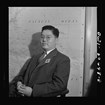
In the early 20th century, Asian immigrants were denied citizenship, and even American-born citizens of Asian ancestry suffered from systemic legal, social, and economic discrimination that relegated them to second-class citizenship. Scorned as a "Yellow Peril" that threatened the economic and moral fabric of the nation from the mid-19th century to the mid-20th century, they were transformed into the so-called "model minority" during the Cold War yet still faced prejudice. Read more
-
Article 16: Essay 15: Asian Immigrants and Refugees: Demographic Transformations in the United States from World War II to the Present

Since World War II, especially with the passing of the Immigration and Nationality Act of 1965 and the refugee flows starting in 1975, the number of Asian Americans has increased significantly. It has become the fastest growing population in the nation, even outpacing the growth of the Latino population. US foreign policy, including US colonization and involvement in wars in Asia. Read more
-
Article 17: Essay 16: New Asian American Communities: Building and Dismantling
Growth and diversity characterize the development of new Asian American and Pacific Islander (AAPI) communities in the late 20th and early 21st centuries. Legacies of wars fought in Asia, the passage of more equitable US immigration legislation in 1965, and post-1975 Southeast Asian refugee resettlement in the United States ushered in new waves of immigration and the exponential growth of the AAPI community. Read more
-
Article 18: Essay 17: AAPI Political Mobilization and Participation

This essay focuses on the emergence and participation of Asian American and Pacific Islanders in the US political landscape. Chinese immigrants arrived in the US as low wage workers with limited knowledge of the nation they were entering and found they were denied virtually all political rights. As part of this political assault, in 1882 Chinese laborers were singled out for immigration exclusion. Read more



